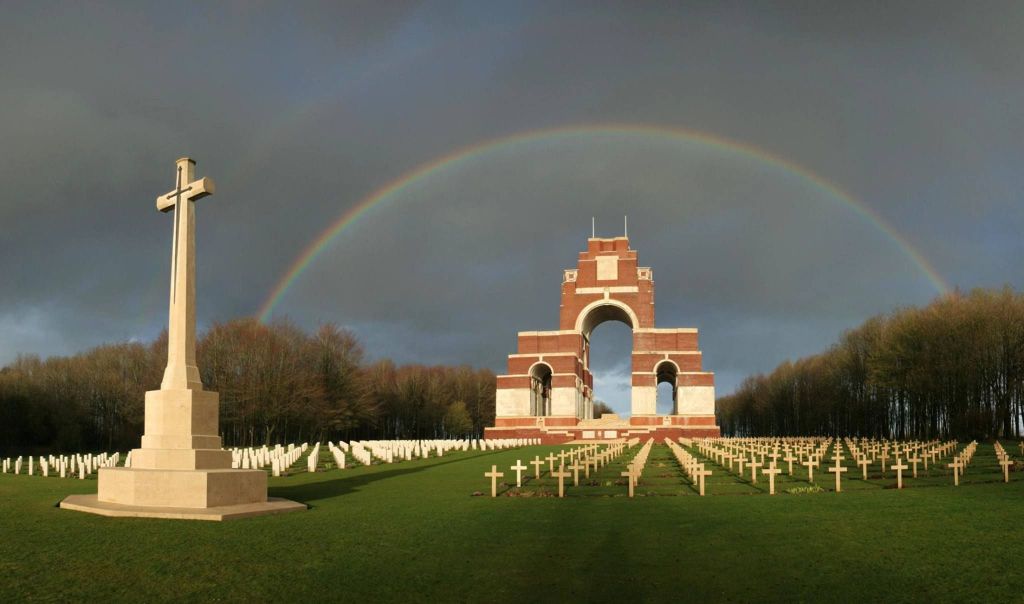- See Amos Fisher’s entry on the Board of Trade’s Ancestry public tree.
- This information updates the group’s previous research published on the former DTI website (now archived by the National Archives).
- Do you have any more information about Amos Fisher? If so the War Memorial Research Group would love to hear from you.
Name recorded on Board of Trade Memorial: A. Fisher
Born: 12 September 1892, Leigh, Lancashire, England
Date of Death: 9 August 1916
Age at death: 25
Service, Regiment, Corps, etc: King’s Liverpool Regiment
Unit, Ship, etc: 1/10th Battalion
Enlisted: Liverpool
Rank: Private (Service no: 4731)
Decorations: WW1 Campaign medals (Victory Medal and British War Medal)
War (and theatre): WW1 (France and Flanders)
Manner of Death: Killed in Action
Family Details:
Residence: Wigan
Home Department: Board of Trade – Labour Department (North Western Division)
Civilian Rank:
Cemetery or Memorial: Thiepval Memorial (Pier and Face 1D, 8B and 8C); Board of Trade War Memorial, London; Memorial to the Staff of the Ministry of Labour; Scottish National War Memorial; St Nathanial’s Church, Platt Bridge WW1 Memorial Clock; Leigh Roll of Honour
Biography:
Amos was born on 12 September 1892 in Leigh, Lancashire, England. He was baptised in Atherton, Lancashire on 12 October 1892. His parents were William Henry Fisher (1872-1960) and Mary Anne Battersby (1870-1953). He had three sisters – Gertie Fisher, 1894-1919), Mary Fisher (1897-1907) and Nellie Fisher (1900-1914) and three brothers – Harold Fisher (1902-1903), William Henry Fisher (1904-1981) and Isaish Orrell Fisher (1906-1971). William was a coal hewer at the local colliery.
In 1901 the Fisher family are living at 18 Adelaide Street, Ince in Makerfield and Amos is aged 8 years old. Ten years later, in the 1911 census, the family are living at 10 Dower Street, Moss Lane, Platt Bridge. Amos is now 18 and working as a railway engine cleaner.
He later found a job working for the Board of Trade at the local Exchange in Wigan (as part of the Labour Department in the North Western Division).
We also know from a handful of Wigan newspaper reports that he learnt shorthand taking the Pitman exam during evening classes and later in 1912 he taught shorthand locally.
He was also a member of the 8th Wigan Scout troop and a member of the choir at St Nathaniel’s Church in Platt Bridge.
During WW1, Amos enlisted in Wigan as a Private and served in the 10th (Liverpool Scottish) Battalion, King’s (Liverpool) Regiment which as an infantry regiment kwown as “the Scottish” which had originally been formed in 1900.
Amos was first posted to fight in France on 24 December 1915 so missed the battalion’s first major action on 16 June 1915 at Bellewaarde in Belgium.
In early 1916, the 10th Battalion were based with the newly reformed 55th (West Lancashire) Division in the area of Hallencourt. In February they were moved to south of Arras where they relieved troops from the French 88th Division. By July 1916 they were based at the front line near the village of Guillemont. The battalion initially spent six days under constant fire near to Trones and Bernafay Woods before moving nearer the village.
On 8 August at 04:20 hours, the 2nd and 55th (West Lancashire) Divisions were part of a huge push to take Guillemont. This action was a failure and resulted in heavy losses. On the first day, the Liverpool Scottish were in reserve, but on the 9 August took part in action which was confusing and constantly moving to avoid German bombardments. The battalion was faced with navigating themselves through unfamiliar territory and the battalion were stuck in no-man’s land and faced a barrage of German shelling which halted their progress. Ultimately the village was not captured by the British until September 1916.
Amos died aged 25 on 9 August 1916. He was one of 600 men and 20 officers from the battalion involved in this action at Guillemont. Of those men – 74 were killed, 174 wounded and 32 were reported missing. Amos was one of the latter. He was later reported killed. His family tried to establish his whereabouts but it was later established that he was killed when a shell hit the machine gun that he was manning. His photograph together with a short report of his death was published on 2 September 1916 in the local Wigan Observer and District Advertiser.

A memorial service was held on 20 September 1916 in remembrance of both Amos and two other local lads at his local church of St Nathaniel’s, Platt Bridge, where he was well remembered as a Christian and a member of the church choir (as reported in Wigan Observer and District Advertiser on 30 September 1916).

A year after his death, on 13 December 1917 (on anniversary of birth of Robert Baden-Powell, Amos was honoured during a special Wigan scout event by the playing of the Last Post.
Amos is remembered on the Thiepval Memorial alongside his fellow soldiers of the Somme campaign. This iconic memorial commemorates those who died or were missing presumed dead at the Somme between July 1915 and March 1918. He was one of 32 Board of Trade men whose names are recorded on the Thiepval Memorial.
He is also remembered on the Board of Trade War Memorial in London and by the St Nathaniel’s Church Memorial Clock in his home town of Platt Bridge. He is one of 89 local men named on the memorial.


Amos is also remembered in the Leigh Journal Roll of Honour and by the Scottish National War Memorial which commemorates the lives of nearly 135,000 Scottish casualties during WW1 as well many subsequent conflicts. The Scottish memorial is located at Crown Square at Edinburgh Castle and a peaceful Hall of Honour and Shrine was built in 1927 by Sir Robert Lorimer and 200 Scottish artists and craftspeople. It is here that the Rolls of Honour are kept on permanent display.

